Weekly Activity: July 10, 2023
Science that Serves
Learn How Animals Help Each Other
(Early Literacy, Elementary, Middle Grades)
Family activity: Parent or caregiver reads the facts, adjusting for age or child. Talk about how these relationships are mutually beneficial and ask children why it is important for people to help each other.
Mutualism Facts
Symbiosis is a close relationship between two different species. Mutualism is a type of symbiosis where both living things in the relationship benefit from the relationship.
Here are some examples of mutualism:
- The Egyptian plover flies into the Nile crocodile's mouth and pecks at its teeth, eating the decomposing meat that gets stuck there. In return, the Nile crocodile gets its teeth cleaned.
- Pilot fish help sharks get rid of parasites, and they pick food out of their teeth. In return, sharks keep the pilot fish safe from other predators.
- Hermit crabs encourage sea anemones to stick to their shells. While the sea anemone gets a free ride, they act as a bodyguard for the hermit crab with their barbed tentacles keeping other creatures at bay.
- An oxpecker lives on a zebra and eats the bugs and parasites on the zebra’s body. Oxpeckers keep zebras safe by flying high and making noise whenever a predator is nearby.
- Bees get the nectar they need by traveling from flower to flower. When bits of pollen from one flower fall into another, it results in pollination.
The Science and Fun of Slime
(Elementary, Middle Grades)
The science of slime involves the study of polymers, which are long chains of molecules composed of repeating units. Slime is a product of a chemical reaction where the molecules of glue and an activator (such as borax, saline solution, or liquid starch) cross-link to form a new substance. Slime is a fluid that changes its viscosity, or ability to flow, depending on the stress applied to it (stirring and stretching).
The fun of slime combines shaving cream, saline solution, and school glue together for a non-sticky basic slime formula. Create an original sculpture at the end of playing, then leave it out to dry overnight for a lasting slime time souvenir.
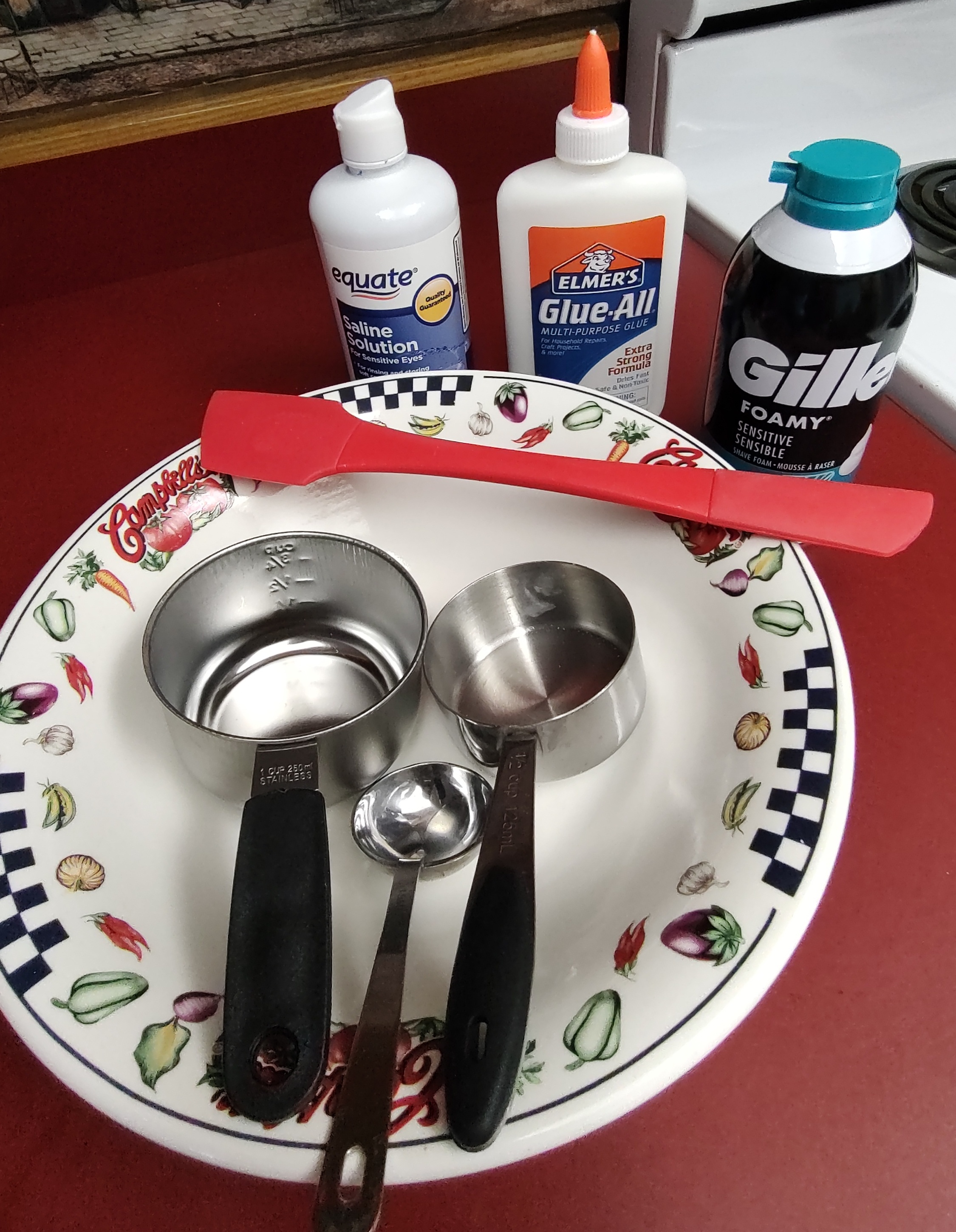
Ingredients
- 1/2 cup of Elmer’s GLUE-ALL Glue (the GLUE-ALL kind works the best)
- 1 1/2 cups of shaving cream
- 2 1/2 tablespoons of contact saline solution with boric acid (very important it has boric acid) You may need a little more depending on the consistency of your slime.
You will need a medium-sized bowl, a stirring tool (ex. a plastic spatula), measuring cups: 1 cup, a ½ cup, and a Tablespoon.
Instructions
Step 1: Measure out all the Elmer’s glue and pour it into the bowl.
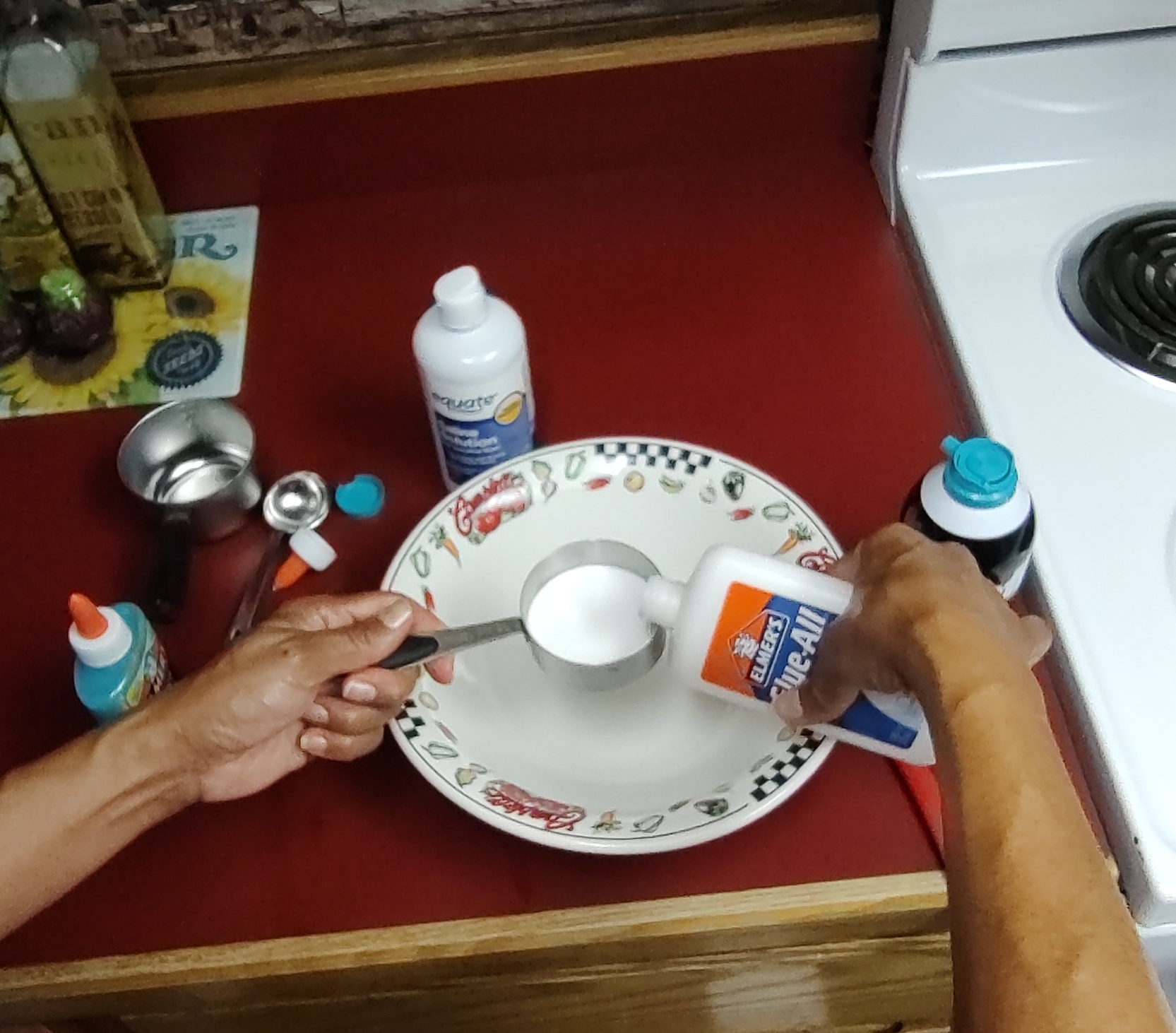
Step 2: Measure out the shaving cream into the cup and add to the bowl.
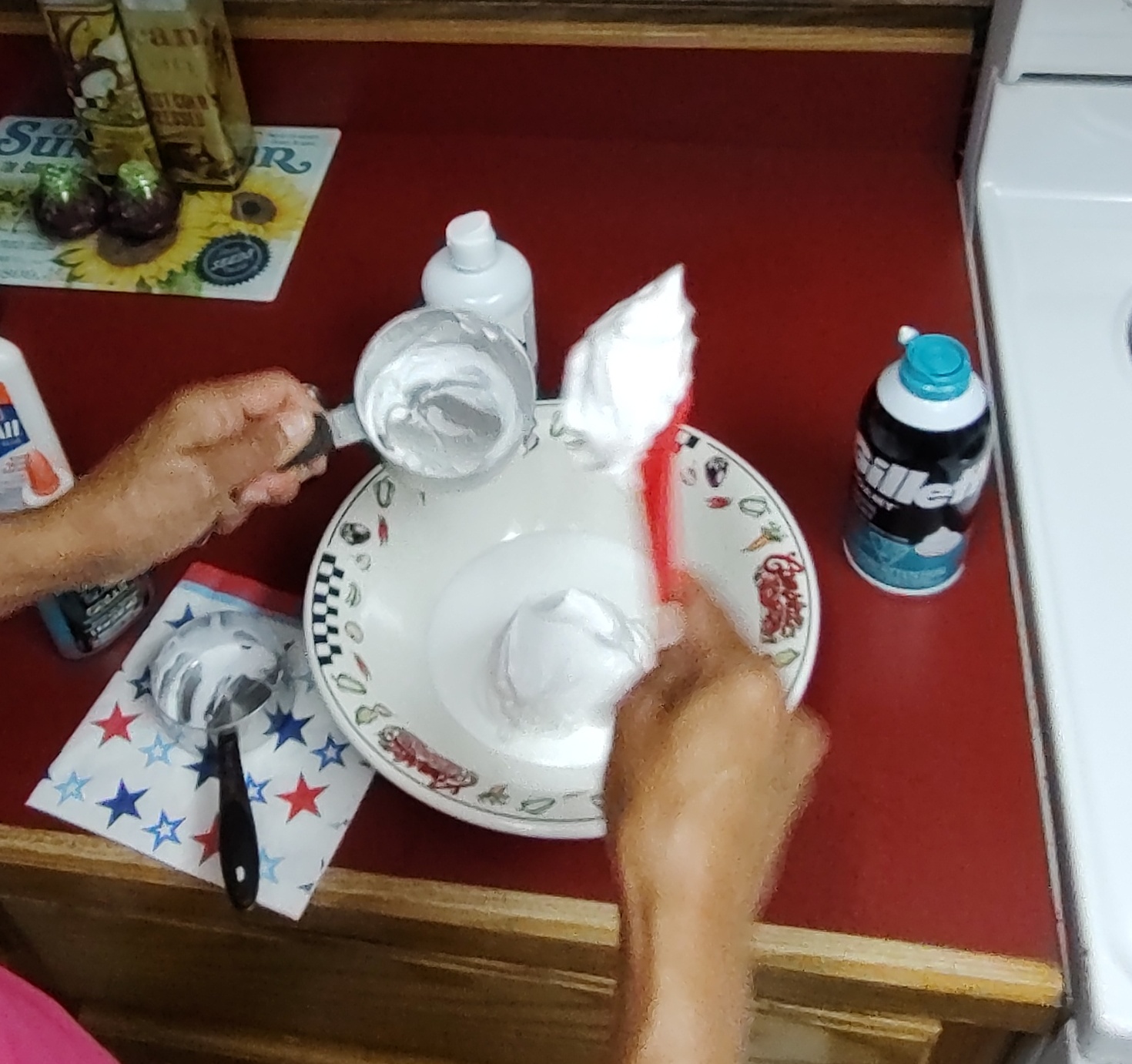
Step 3: Stir well. It will start to look soupy and then a little fluffy!
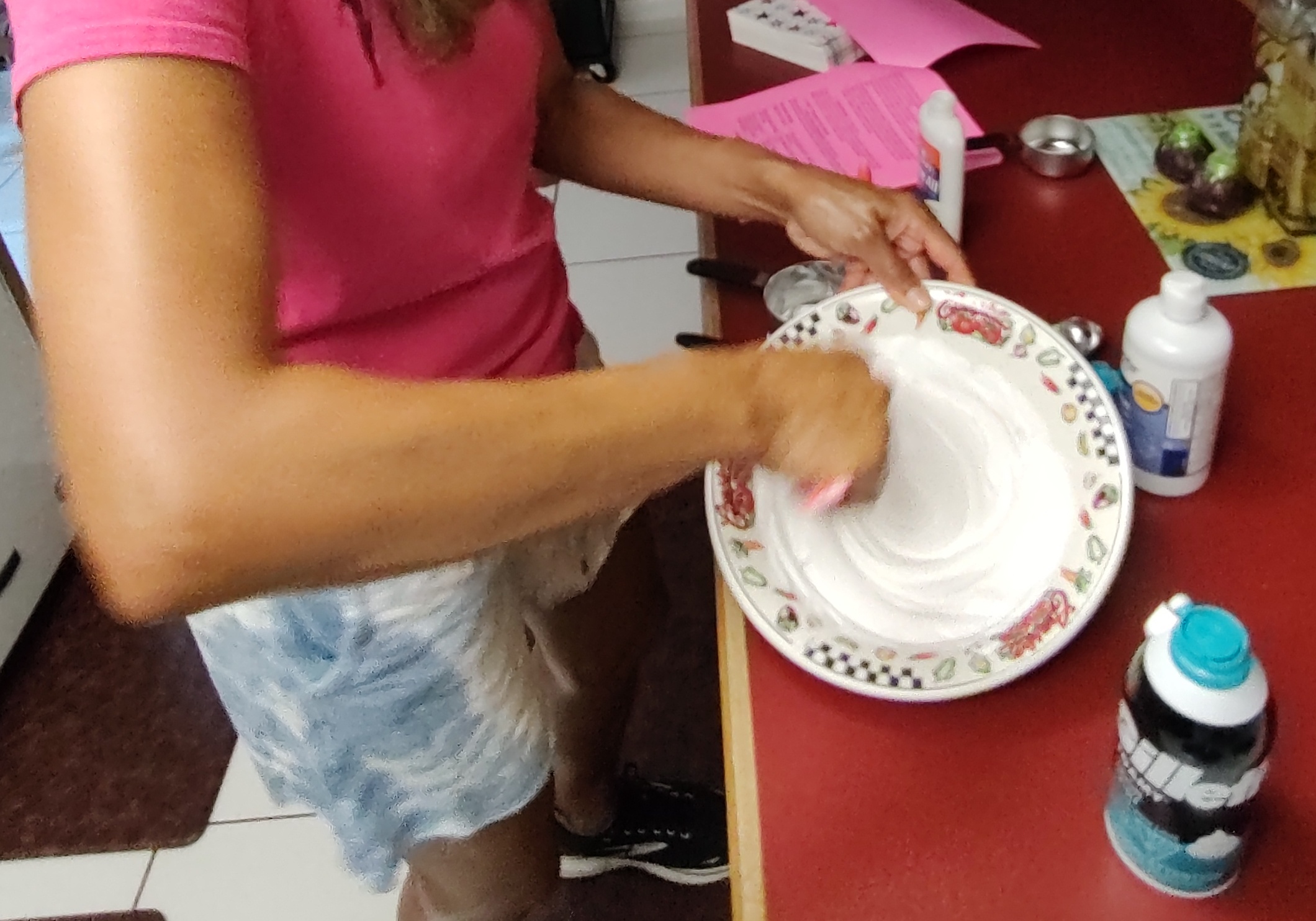
Step 4: Add the contact solution a little bit at a time. This is what keeps your slime together and makes it not sticky. It is helpful to have a second person help hold the bowl, or dribble in the contact solution.
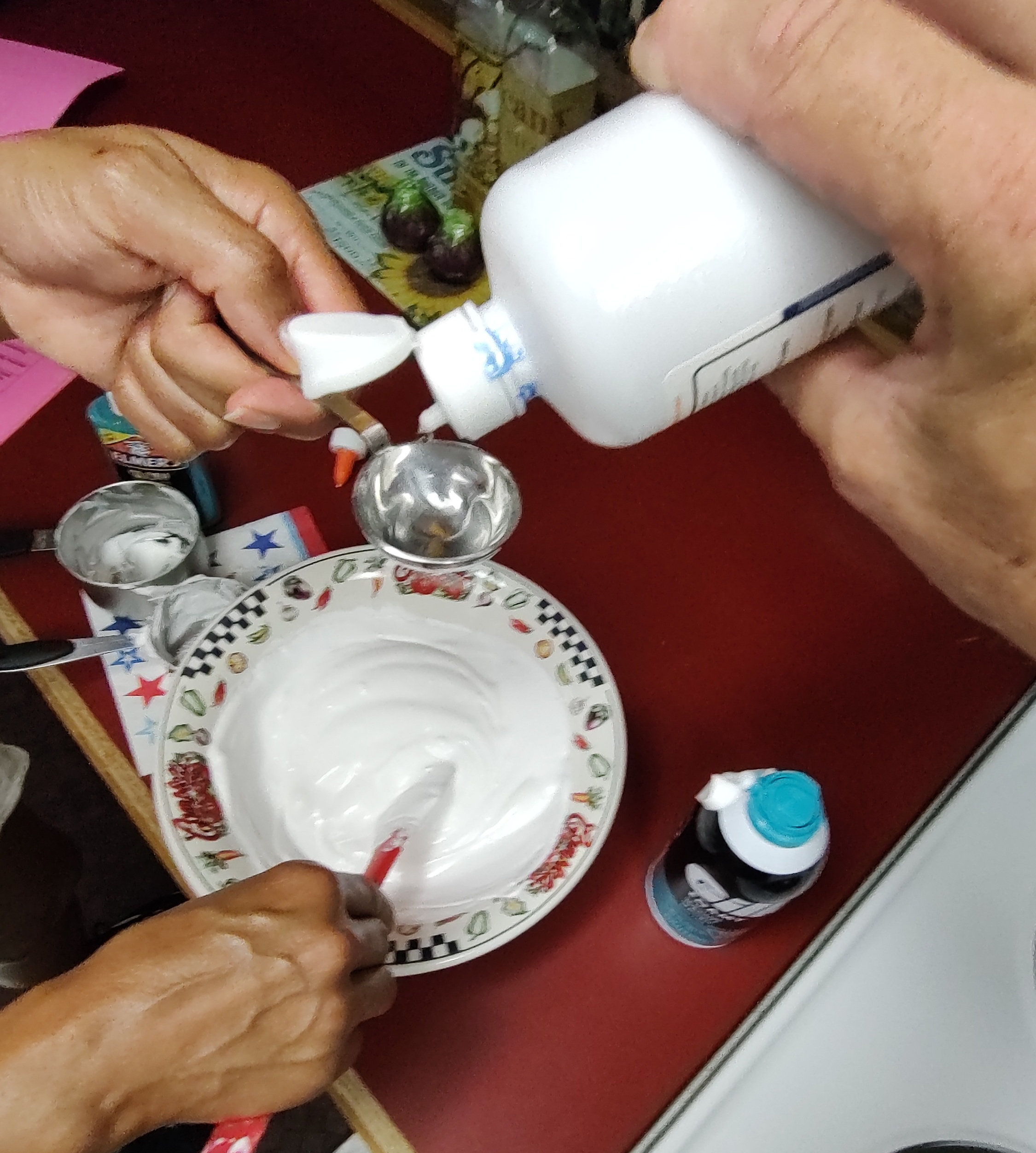
Step 5: Continue to stir the mixture until it does not stick to the edge of the bowl anymore. The slime should start to clump together and form a ball. Clean the sides of the bowl with the ball!
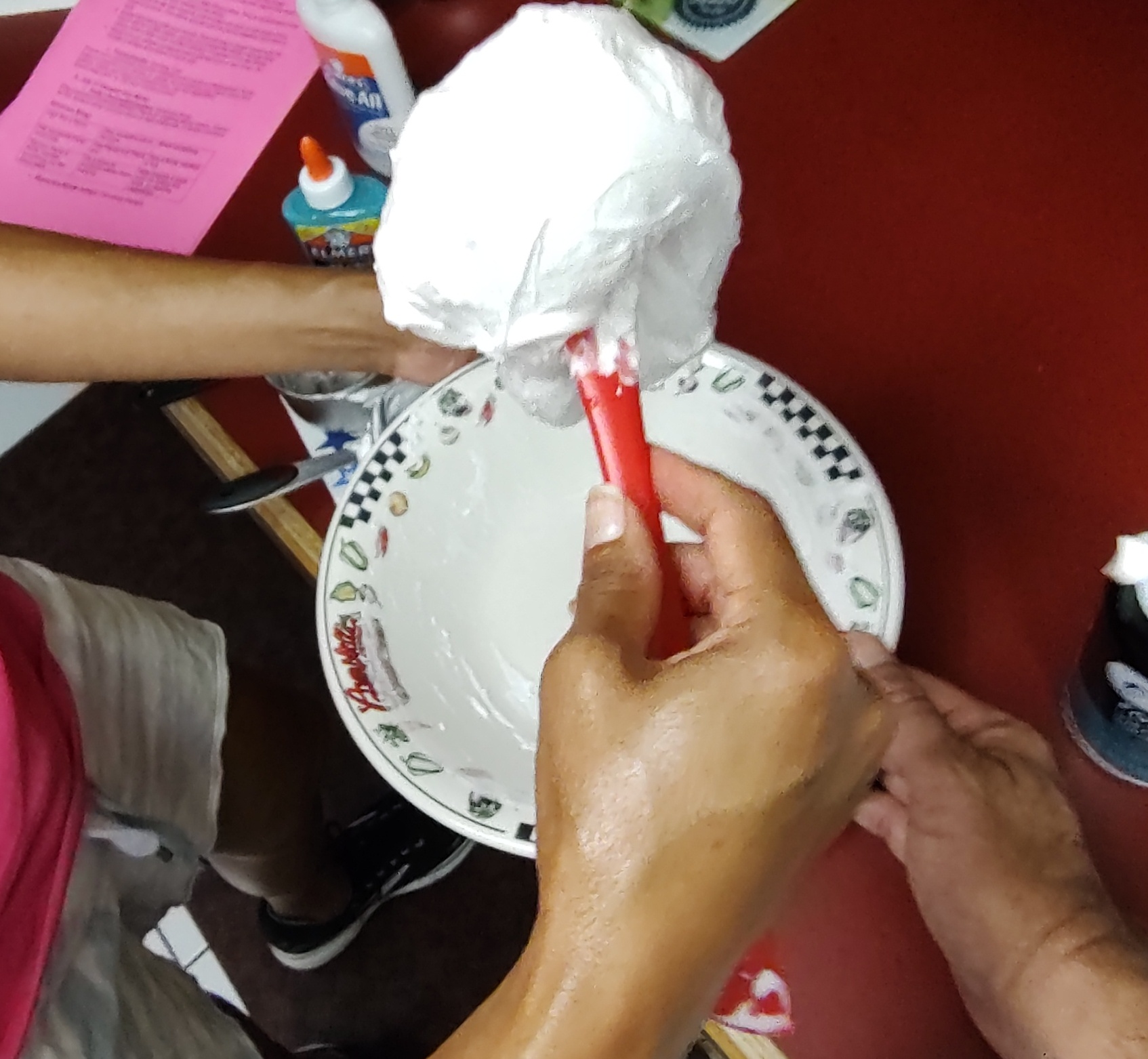
Step 6: Knead the slime with your hands. This will help it all get mixed well. At first it will be a little sticky, but as you knead the slime it will get less sticky.

Step 7: Add a little more contact solution on your hands if needed if it is too sticky.
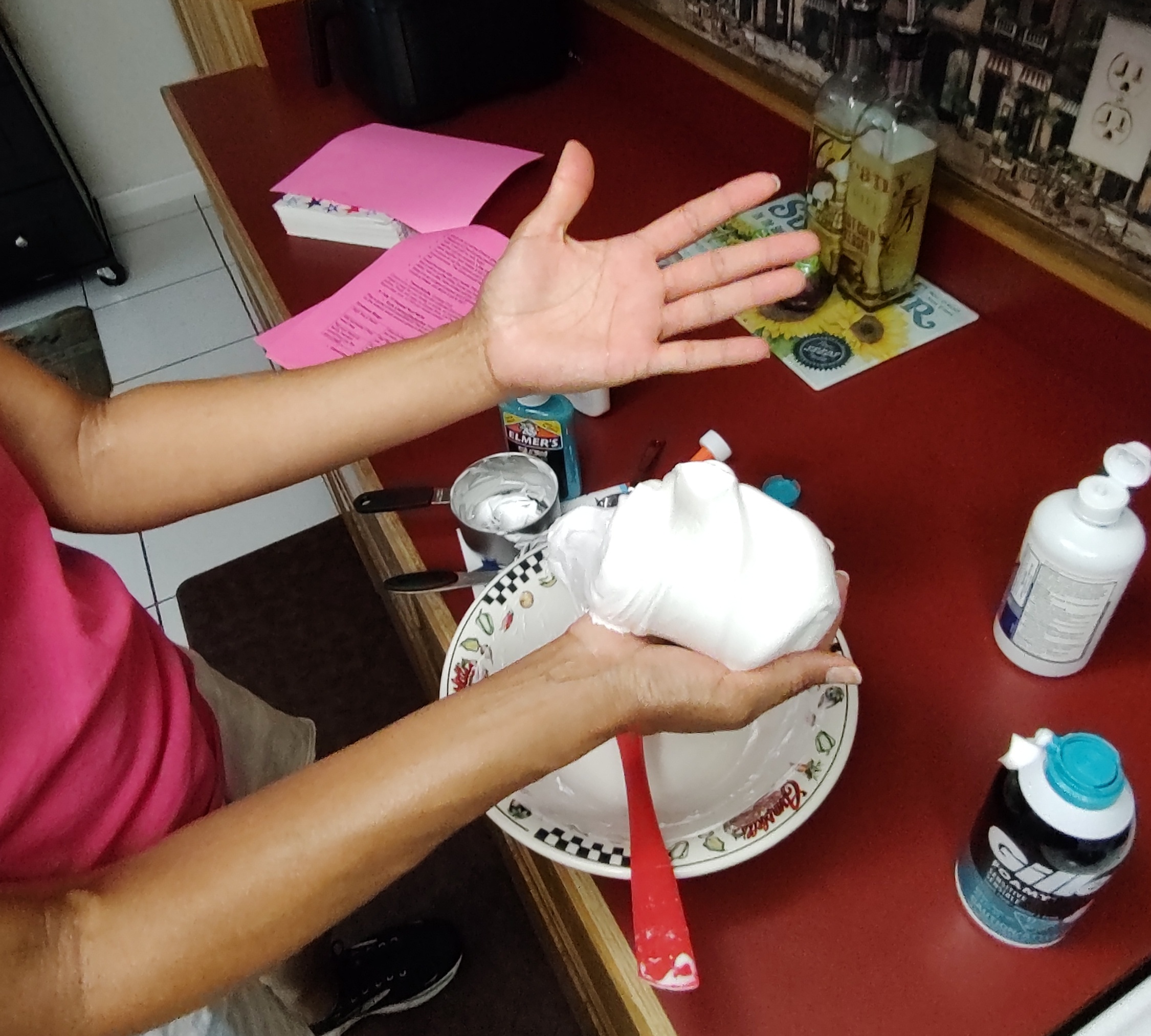
Step 8: Store it in an airtight container and it will last one or two days. Or create a shape and leave it out to dry!
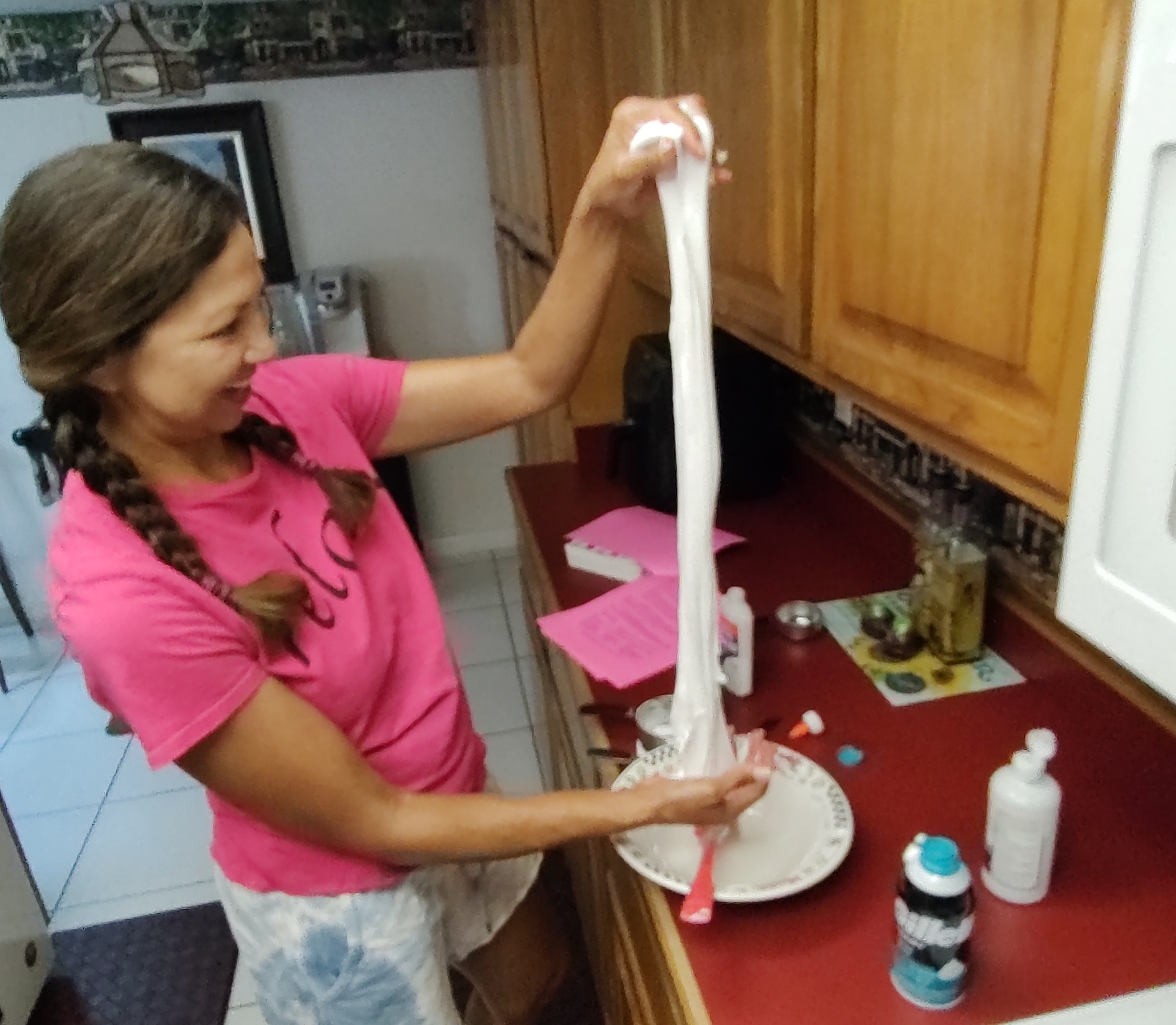
Cooking Club
(Teens, Adults)
Check out a cookbook from the collection and create a masterpiece! Teens, make a meal for your family, or adults, try something you have never had before. There are many to choose from, use the WebOPAC flopac.klas.com, or call your reader advisor.




